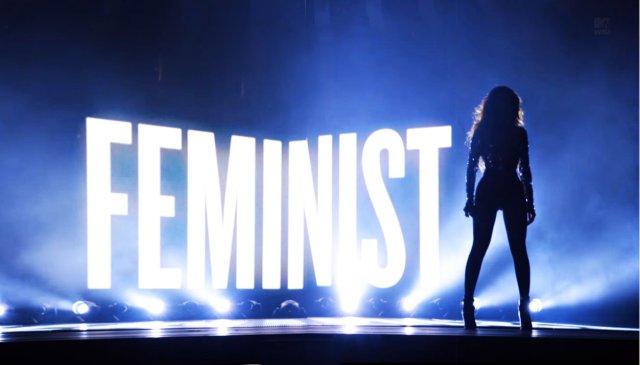
Freedom Fallacy: The Limits of Liberal Feminism
Edited by Miranda Kiraly & Meagan Tyler
Published by Connor Court, 2015
With Miley Cyrus declaring herself “one of the biggest feminists in the world”, and Beyonce performing at the 2014 MTV Music Awards in front of a huge illuminated sign that read “Feminist”, it would appear that feminism has gone mainstream.
However, many rightly question whether the goals of a movement for women’s liberation can really be reconciled with mainstream celebrity and popular culture. The contributors to Freedom Fallacy regard the apparent dominance of liberal feminist discourse, with its uncritical usage of the concept of “choice”, as a troubling development.
Editors Miranda Kiraly and Meagan Tyler adopt the term “freedom fallacy” to illustrate that “there can be no freedom, no liberation, when the available choices are only constructed on the basis of gross inequity”.
The liberal feminist perspective privileges the choices of the individual, while stripping these choices of the social, economic and political context in which they are made. It has little to say about the systems of power which impinge upon women and structure their oppression.
We have the strange situation in which activities “once held up as the archetypes of women’s subordinate status” are now regarded as liberating, personal “choices”.
“Marriage becomes a pro-feminist celebration of love … labiaplasty becomes a useful cosmetic enhancement. Pornography becomes sexual liberation. Sexual objectification becomes a barometer of self-worth.”
The flourishing of liberal feminism in the 1990s came on the back of a conservative assault on some of the radicalising elements within second-wave feminism. It was influenced by the then-popular ideas of post-modernism and post-structuralism.
It was the belief of some “third wave” feminists that “feminism isn’t about what choice you make but the freedom to make that choice”. The corollary of this view, Rebecca Whisnant asserts, is that “in order to establish that a choice in any given situation is a feminist one, we need only show that it is, in fact, really and authentically, one’s own choice, that whatever one is doing, one had freely chosen to do it”.
Burlesque performer Dita Von Teese exemplified this “I do what I want” ethos when she responded to the charge that her act could be considered disempowering for women. She said: “How can it be disempowering when I’m up there for seven minutes and I’ve just made $20,000? I feel pretty powerful.”
Clearly, Von Teese’s priorities are informed by narrow self-interest and the privileging of individual economic benefit, over any potential concerns about the objectification and commodification of women’s bodies.
As Whisnant astutely points out, “the fundamental feminist question is not whether some individual women 'like' or ‘choose’ that role or practice but whether the overall effect of the role or practice is to keep women as a group subordinate to men”.
Feminists had once been some of the most vocal critics of the violence, both physical and symbolic, that the porn industry perpetrated on women. Moving into the 1990s-2000s, some feminists responded to the rise of porn culture with an “if you can’t beat ‘em, join ‘em” position. They said it was possible for women to be empowered by participating in the industry, and reclaiming and controlling their own sexual objectification.
The focus on pornography and the sex industry continues across several chapters. There are, however, insightful analyses of other topics.
Tyler sees the triumph of liberal feminism in the way criticisms of the institution of marriage have been taken off the feminist agenda: “In a culture of individualised ‘choice’, feminist concerns about marriage and its links to women’s inequality become recast as feminists judging other women and trying to ‘prescribe the way women live their lives’.”
Shakira Hussein and Camille Nurka consider the hypocritical discourse around genital modification practised on Muslim women. This positions non-Western female genital mutilation as barbaric, and Western female genital cosmetic surgery as a ‘lifestyle choice’ or healthful procedure.
The editors, in their introduction, contend that the divisions between the different branches of feminism are less to do with chronology or age — for example, “second” versus “third wave”. Rather, “it is a question of ideology”.
However, Freedom Fallacy would have benefited from a more rigorous ideological grounding. Kiraly contributes a chapter in which she asserts that “men of the left and the right benefit from the dominance of liberal feminism, as it does not fundamentally challenge male power, but rather grants women conditional participation in the liberal sphere, on men’s terms”.
This spurious argument leads her to conclude that “women should not be divided by traditional notions of left-right politics ... any movement for women’s liberation must transcend such barriers if it is to be effective”.
This is a counter-productive outlook. It comes close to biological essentialism and discounts the efforts of the many men who are fighting to overturn the system of capitalist patriarchy that benefits an elite few.
A key weakness of the book is its relative silence around class, and failure to properly situate women’s oppression within the context of capitalism. A more sustained, overarching emphasis on the intersection of class with sexism, racism and other axes of oppression would help to illustrate the complex ways in which the system of capitalist accumulation benefits from the continued subjugation of women and other oppressed groups.
The changing nature of employment under neoliberalism is an issue which bears heavily on women, and it is therefore somewhat surprising that the book does not offer a more focused discussion of this issue.
Women are among those worst affected by the predominance of insecure work. The at-times outright contempt shown by both sides of Australian parliamentary politics for the disadvantage faced by single, working-class mothers casts the limits of liberal feminism into sharp relief.
The radical potential of feminist thought and action, if it is to achieve meaningful social change for all women, must be connected to the wider aim of creating a more just, egalitarian society.
Comments
slavicwoman replied on Permalink